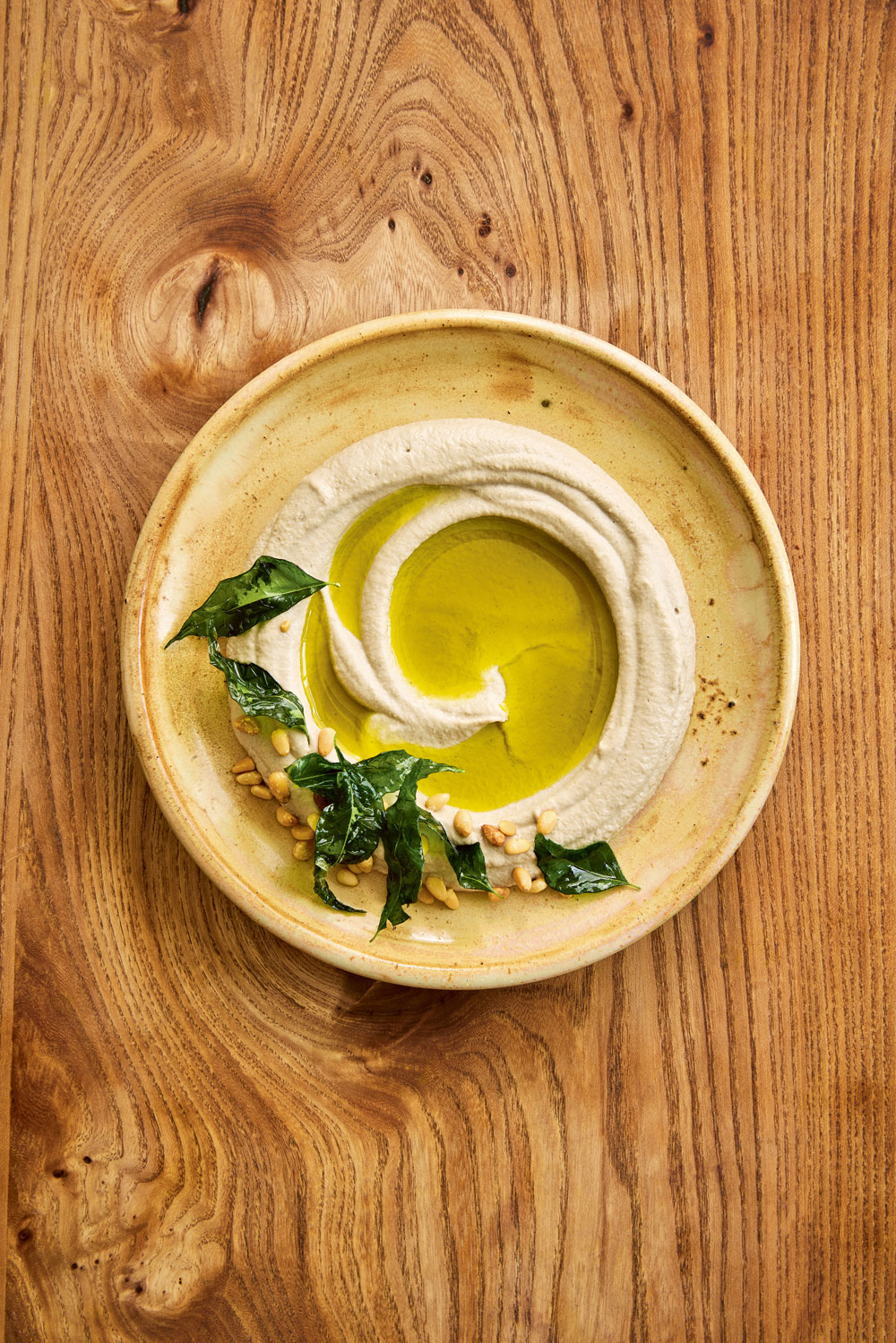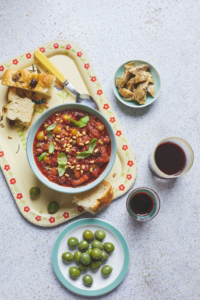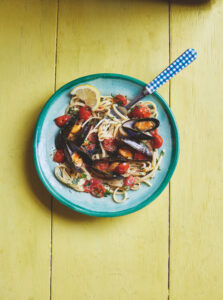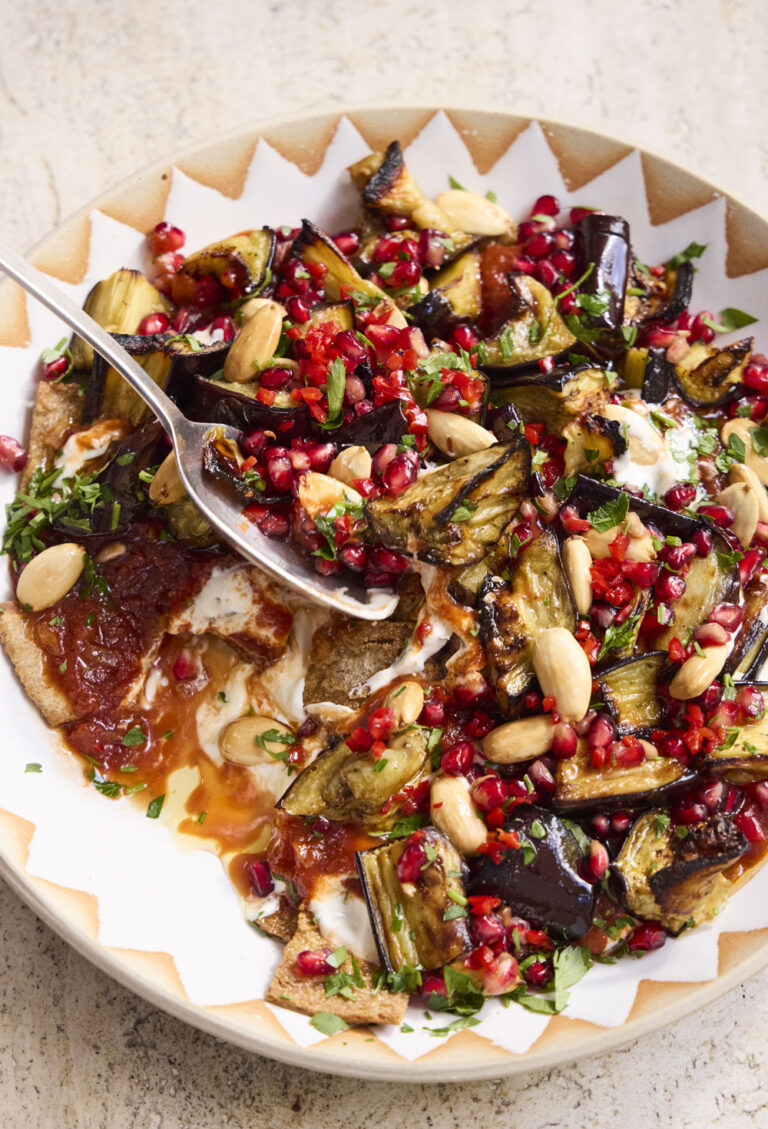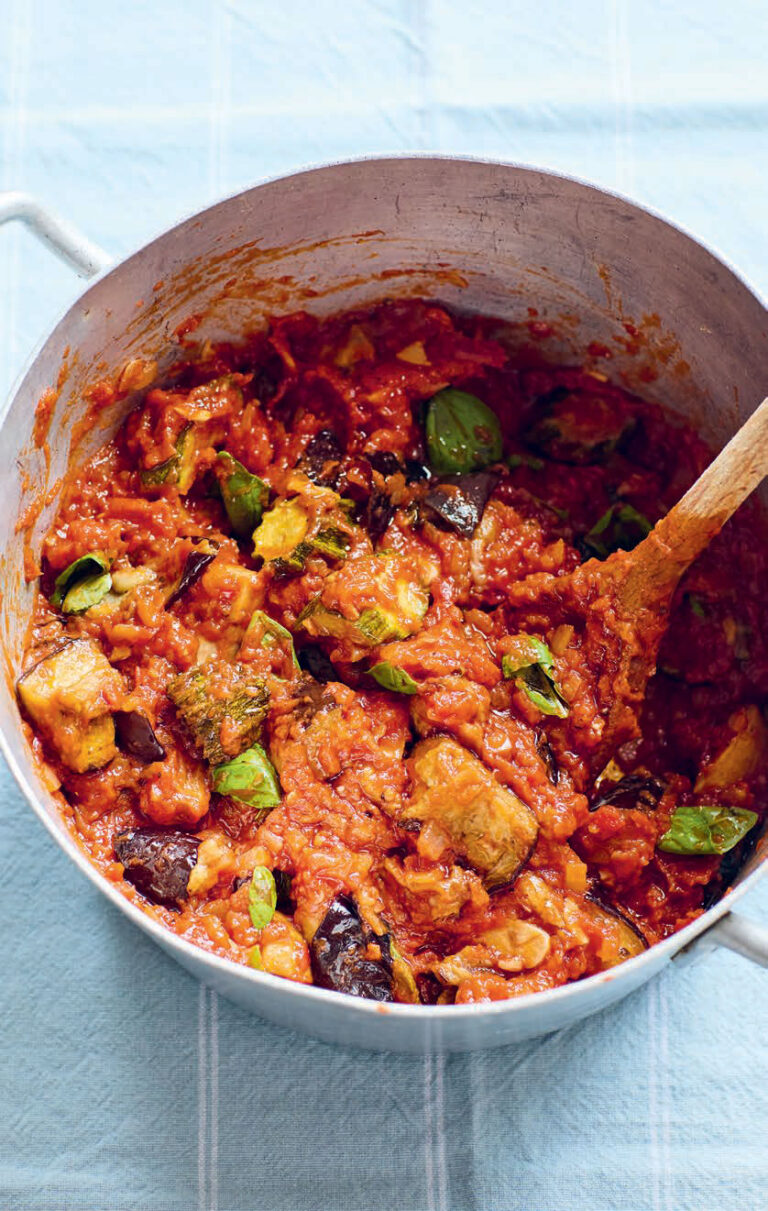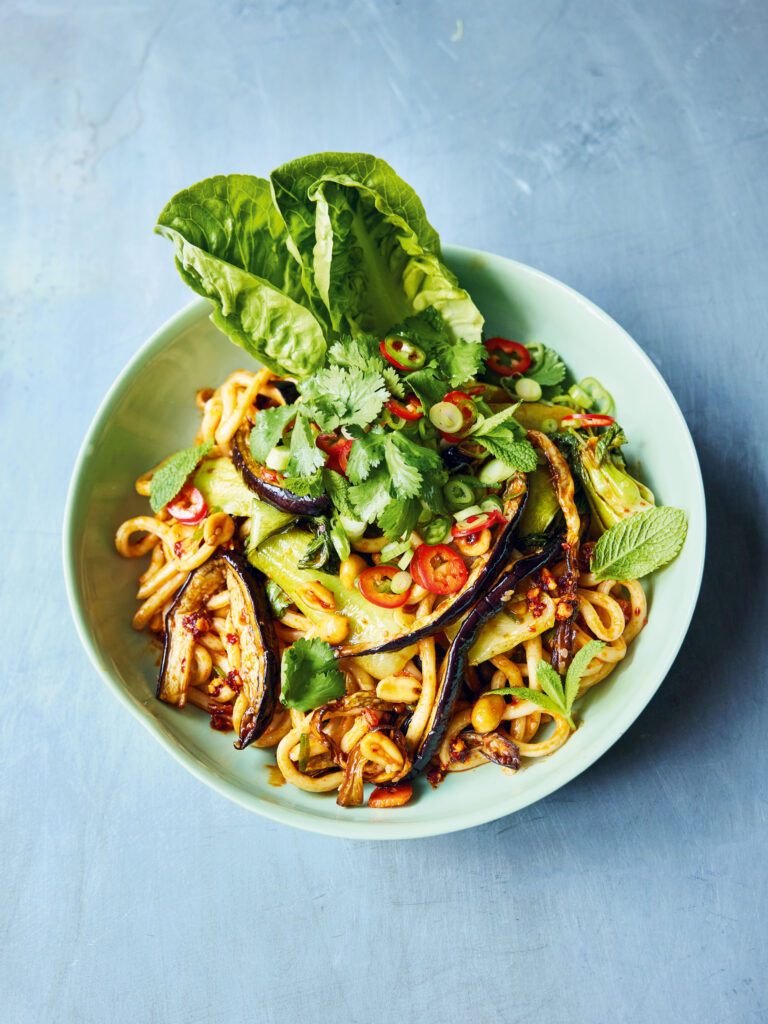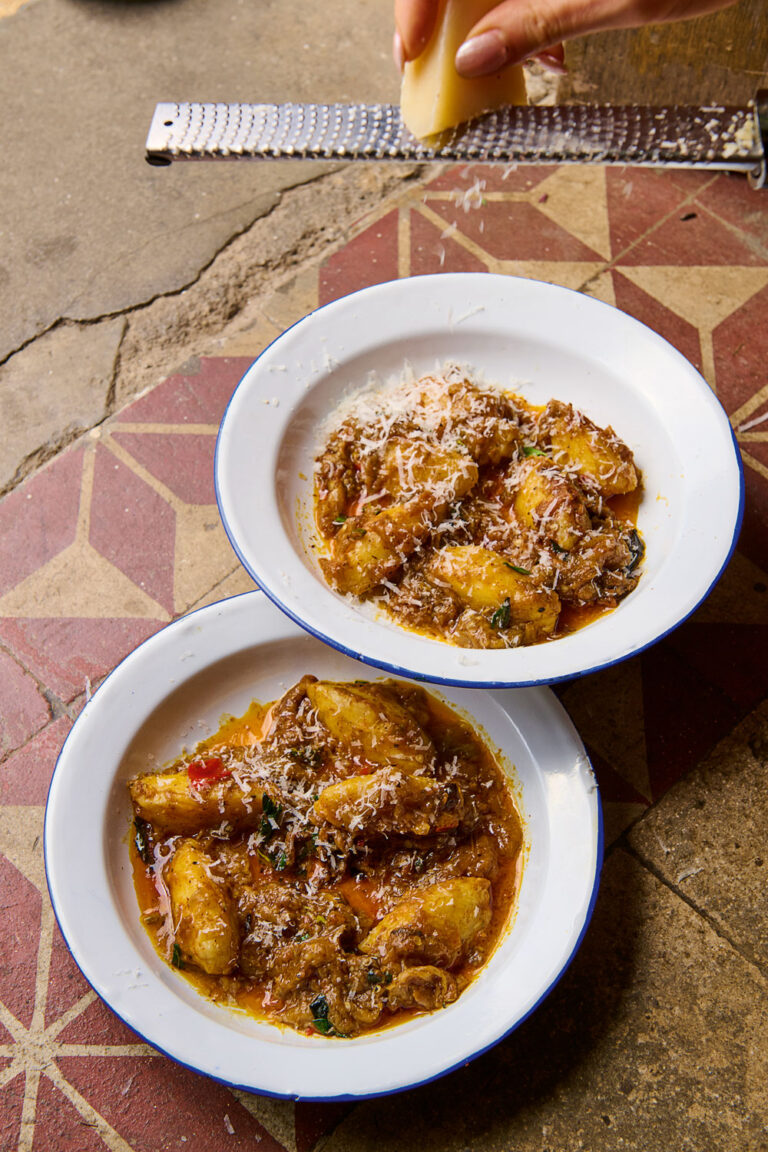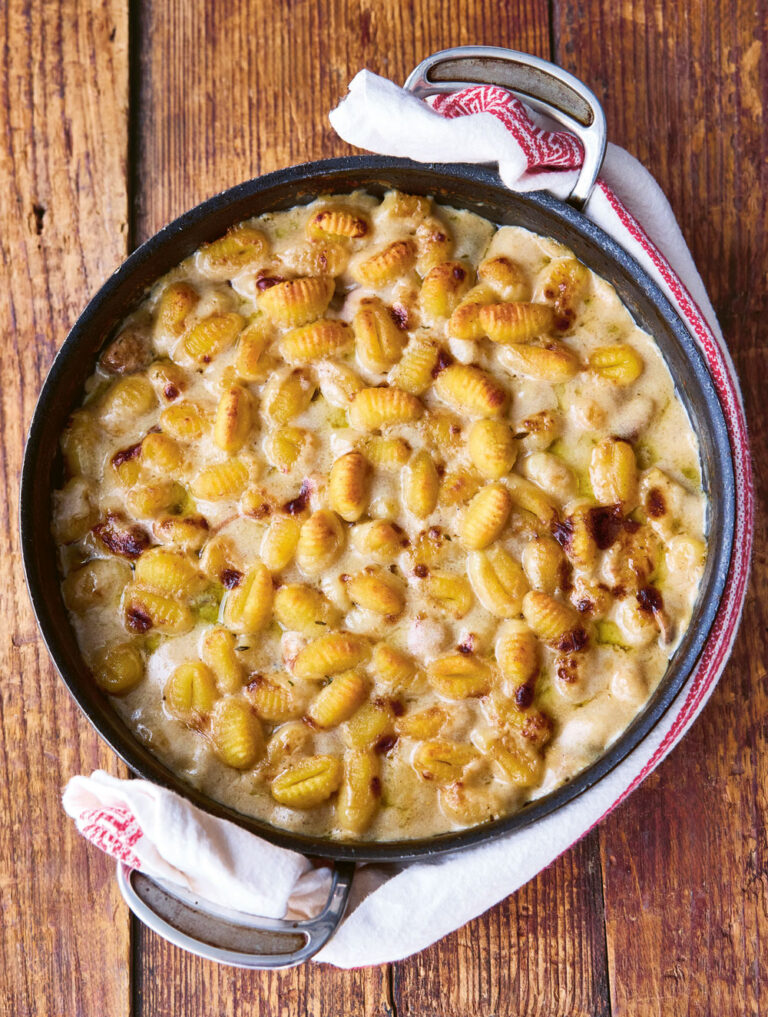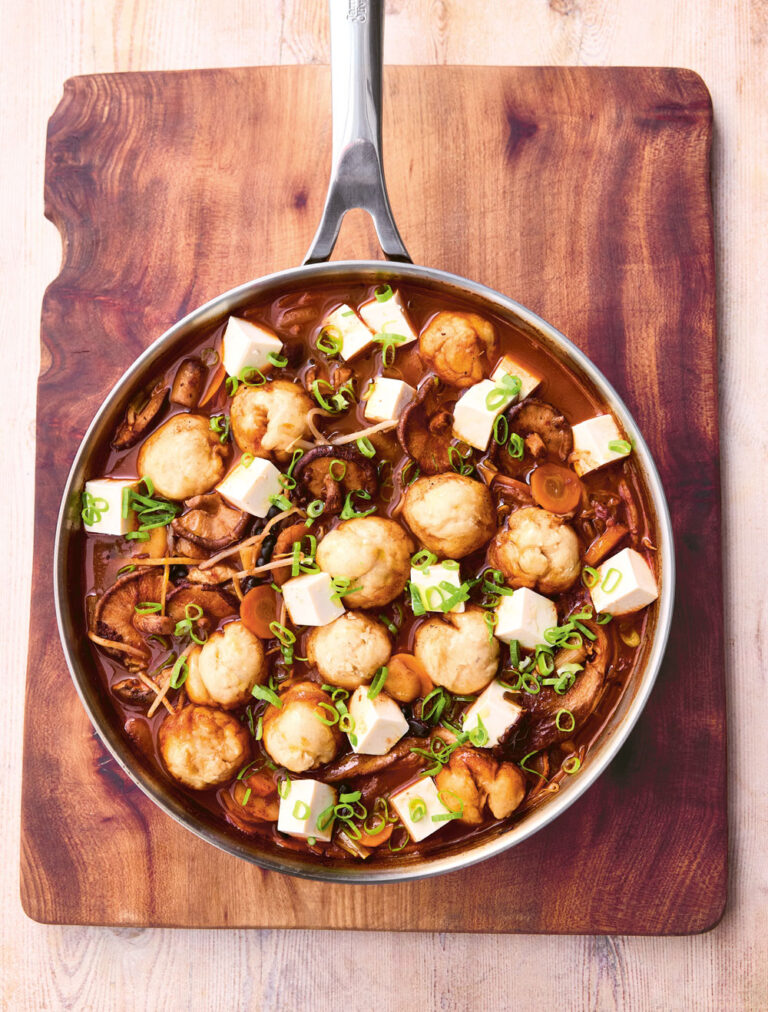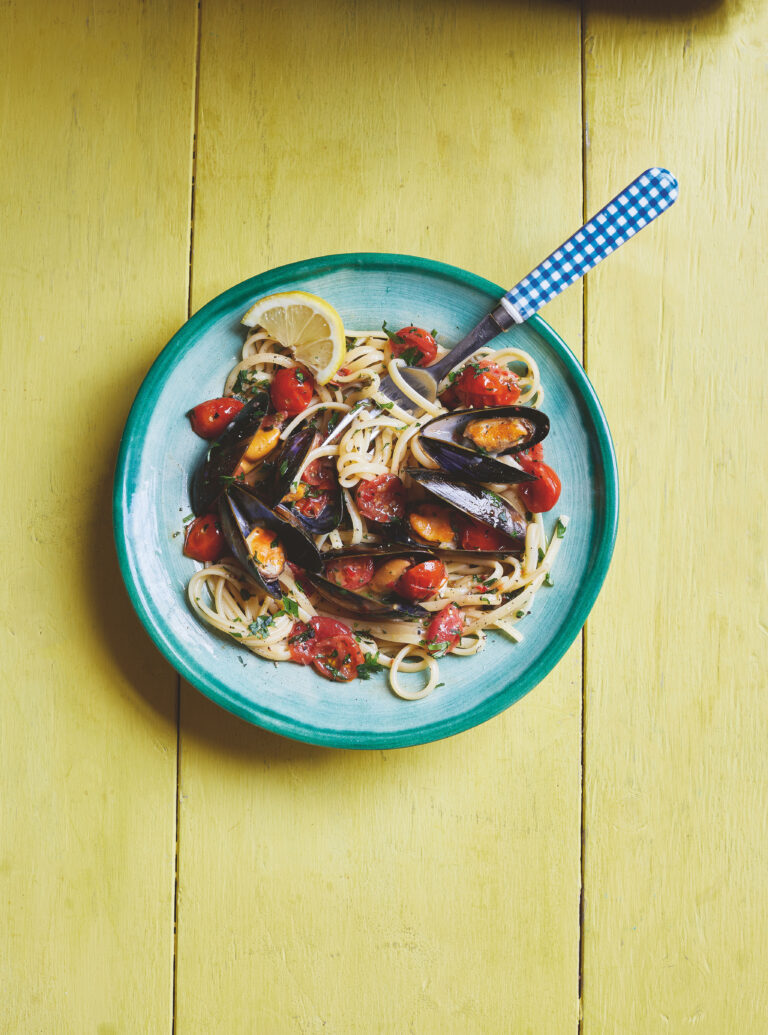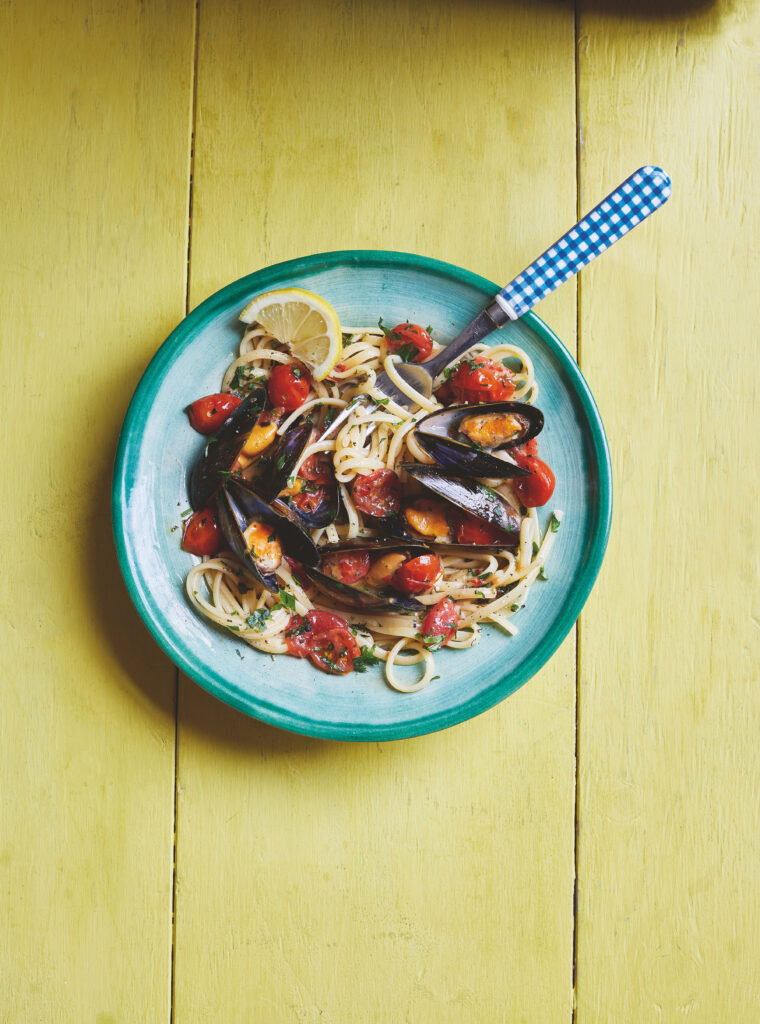Sicilian-Style Aubergine Stew
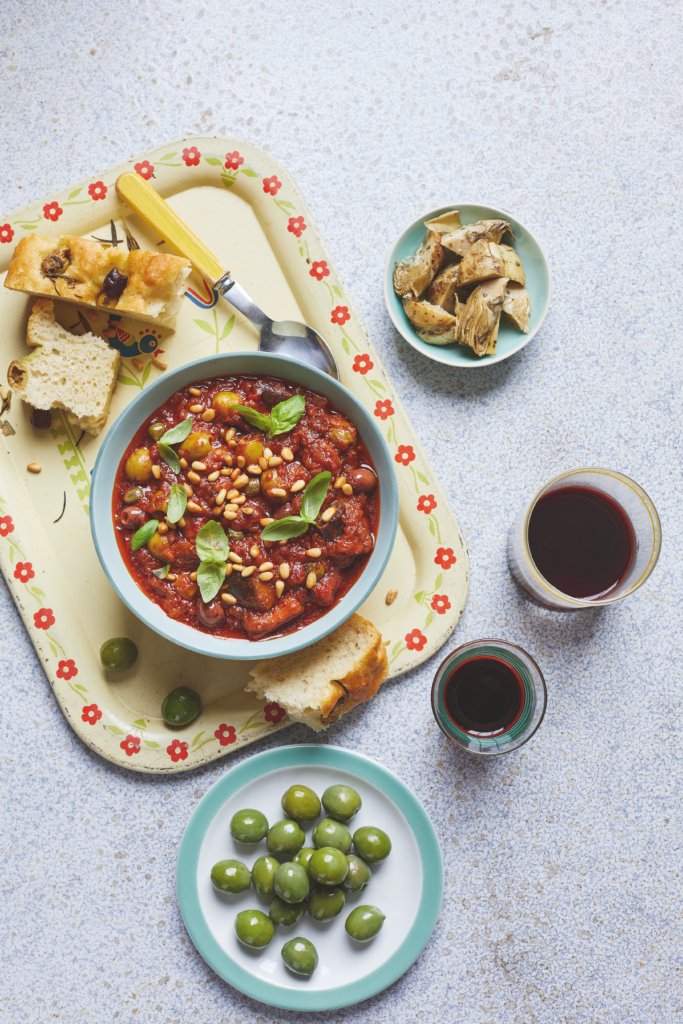
This simple aubergine and tomato stew features salty capers and olives, perfect for serving for friends alongside focaccia and a fresh green salad.
From the book
Buy From
Introduction
Whenever I ask my friends what they’d like to eat, they look blankly at me as if to say, ‘We really don’t have a sodding clue.’ So I reel off a list of possible suggestions, which always includes a curry, a roast, a risotto, and the word ‘caponata’. Inevitably, they ask me, ‘What is this caponata you speak of, Freeborn?’, and I reply with, ‘It’s a sour Sicilian stew made with lots of olive oil, aubergines, tomatoes and capers, lifted by a heavy hit of red wine vinegar in the final moments of cooking. People usually add pine nuts, but look, I’m not made of money, so toasted chopped almonds will have to do if you want me to cook this for you.’ Then, their faces light up and they say, ‘We would very much like to eat that, please and thank you.’ This recipe is closely based on caponata but with more flexibility with the ingredients. It freezes well, so if cooking for fewer than four people, you can save portions for when you need a hit of hearty instant deliciousness.
Note on vinegars:
One of the funny things about Italian cuisine is how regimented peasant dishes such as caponata have become. A real nonna would have used whatever she had available back in the day. Regarding the different vinegars, though, each one will change the character of the dish slightly – balsamic will be sweetest, and white wine will be sourest – but what you’re after is that top note of acidity, which comes with any sort of vinegar. Caponata is often preserved in jars, so I imagine the vinegar helped with the preservation process as well as making things completely delicious.
Ingredients
| a third of a mug | of good olive oil |
| 2 large or 3 smaller | aubergines |
| 4 | shallots, if you can find them, or 2 medium white onions if you can't |
| 2 | garlic cloves (optional) |
| 2 tins of | chopped tomatoes or peeled plum tomatoes |
| 1 tbsp | raisins (exceedingly optional but very authentic) |
| 2 tbsp | double-concentrated tomato purée |
| a small glass or half a mug (about 150ml) | red wine |
| a good tbsp | capers (if your palate hasn't yet reached maturity, you may leave these delicious morsels out) |
| 2 tbsp | pitted olives or more if you like them (I'll use whatever in the cupboard or fridge; it doesn't matter if they're green or black. Again if you're not a culinary chad, you can leave these out) |
| 4-5 tbsp | EITHER (in order of preference) red wine vinegar, balsamic vinegar, white wine vinegar or malt vinegar (see note in introduction) |
| salt and freshly ground black pepper | |
| 2 tbsp | pine nuts, if the budget allows, or the same quantity of chopped almonds if it doesn't, to serve |
| a good handful | fresh basil, if you want, to serve |
Method
Takes 30 minutes of hands-on work and around 1 hour to cook, plus 2–4 hours optional vibe time resting on the hob.
Pour your olive oil into a large, deep saucepan – it should definitely cover the bottom and come up the sides a little. Place over a medium heat. As it warms up, roughly chop your aubergines into oblongs of around 2–3cm. Add them to the pan, along with some salt, and fry them, stirring often, until the oil has soaked in and there’s a little bit of golden-brown colouring on the flesh – around 6–8 minutes. You may need to do this in batches to get some properly nice browning.
Just as the aubergines are colouring, remove them from the pan and set aside in a bowl – you’ll want them again in just a minute. There should be a small amount of olive oil left in the pan. Finely chop and fry your shallots or onions with a pinch of salt in this oil, adding more if necessary. Cover until they’re translucent and cooked through, around 10 minutes. Add the garlic halfway if you’re using it. Then, return the aubergines to the pan and fry for a little longer. Next, add your tins of chopped tomatoes, breaking up any plum ones with a spoon as you go. Add a good pinch of salt now, and a grinding of black pepper, along with your raisins, if they’re going in. Squeeze in the tomato purée and add the red wine, then stir and simmer for around 45 minutes–1 hour with a lid on.
Once that time is up, stretch and have a cup of tea, then take the chance to add the capers and olives, if using. Next, pour in your vinegar. It should smell really sour at this point, and have a good acidic top note when you taste it, but with a deep richness underneath from all that previous simmering.
Adjust for seasoning (does it need more acidity? Or perhaps salt? Or maybe it’s too tangy for you and you need a splash of olive oil? Don’t mention this to the polizi, but you could add a cheeky tablespoon of pesto here. Shhhhhh). When you’re happy, let it simmer – uncovered – for around 10 minutes while you doom-scroll. You can serve it now, but it’s much better if you switch off the heat and leave it on the hob to meld for a few hours, reheating when you want to serve it.
To serve, toast the almonds or pine nuts in a dry frying pan and scatter them over the pot, along with some torn fresh basil leaves.
Caponata is usually served as a side, but we’ve taken to having this dish as part of an Italian-themed main, served with lots of focaccia (see page 171 of Do Yourself a Flavour), some antipasti, such as artichokes and salami, and a huge green salad.
Reviews
6 Ratings
Have you tried this recipe? Let us know how it went by leaving a comment below.
Our team is taking a break over Christmas and may be slower to respond to your comments or queries. We apologise for any inconvenience this may cause.
Please note: Moderation is enabled and may delay your comment being posted. There is no need to resubmit your comment. By posting a comment you are agreeing to the website Terms of Use.
